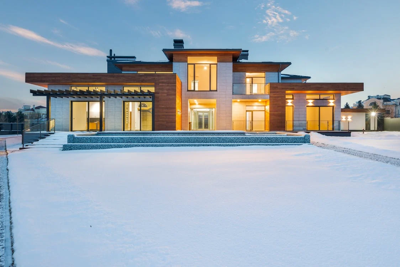
Managing high-end rentals comes with unique risks. From costly repairs to liability concerns, having the right insurance is critical.
So, explore the following essential coverages to protect your property and financial investment effectively.
Comprehensive Property Damage Coverage
Safeguarding your property is essential, especially when managing high-end rentals with costly finishes and unique designs. These properties often require specialized policies to address more than just routine wear and tear.
Comprehensive cover is necessary to protect against unexpected events that could result in major repair costs or replacements.
For property owners, specialized landlord or high-value property insurance is necessary to protect the building and premium contents. Landlords can also suggest that tenants obtain Lemonade renters insurance (available via a trusted agency), which covers personal property, liability, and certain damages, helping protect their belongings during their stay.
Ensuring you have this level of protection keeps surprises from becoming financial burdens down the line.
High Liability Protection Limits
Luxury rentals come with unique risks, especially when they feature amenities like pools, gyms, or other premium facilities.
Accidents can happen anywhere on the property. Without adequate liability protection, you may face costly legal fees or damages if someone is injured during their stay.
Choose policies that offer higher-than-standard liability limits to account for potential lawsuits and medical expenses. This ensures you're covered whether it’s a slip by the pool or an issue with a guest's use of high-end appliances.
Coverage for Natural Disasters
High-end properties often include locations with stunning views, which may come with exposure to natural risks.
For example, coastal homes face hurricanes and flooding, while mountain retreats risk wildfires or heavy snow damage. Repairing a luxury property after such events can be extremely costly.
Standard policies might not provide enough coverage for region-specific disasters.
It’s important to add protection tailored to your property’s location, like earthquake insurance in seismic zones or windstorm coverage near the coast.
Preparedness ensures you’re never caught off guard by nature’s unpredictability.
Insurance for High-Value Furnishings and Appliances
Luxury rentals often feature premium furnishings, high-end appliances, and custom-built installations. These elements enhance your property’s appeal but can also make it more expensive to replace or repair after damage or theft.
Standard insurance may only cover the basics, leaving gaps when it comes to items like designer furniture or state-of-the-art kitchen equipment.
Opt for policies that include protection specifically for high-value belongings. This ensures you won’t face hefty out-of-pocket costs if accidents, break-ins, or other issues affect your property’s premium features.
Loss of Rental Income Protection
When your high-end rental becomes temporarily uninhabitable due to damage or repairs, the financial strain can escalate quickly.
Lost rental income during downtime adds another layer of stress to an already challenging situation.
This is where loss of rental income protection comes into play. It covers the money you would have earned while repairs are underway, keeping your cash flow stable.
Whether it’s due to a fire, water damage, or another covered event, this coverage helps protect both your property and your financial stability.
Guest Injury or Accident Coverage
Guests in luxury rentals expect a seamless and safe experience, but accidents can still occur. Whether it’s a slip on wet flooring or an injury caused by malfunctioning amenities, you could be held responsible for medical costs or legal claims.
Guest injury coverage ensures you’re protected from these liabilities. This policy covers expenses related to guest injuries, including medical bills and potential legal fees.
Prioritizing this type of coverage shields your finances while maintaining the trust and reputation that premium properties require.
Customizable Policies for Short-Term or Long-Term Leases
Lastly, high-end rentals may serve short-term vacationers, long-term tenants, or both.
Each scenario brings different risks and coverage needs.
For instance, short-term rentals often face higher turnover rates and more wear, while long-term leases carry risks like prolonged tenant-related damages.
So, choose an insurance provider that offers flexible policies tailored to your leasing structure.
For short-term stays, ensure coverage extends to frequent guest activity. For long-term tenants, prioritize protection against sustained property damage over time.
Customization ensures your policy aligns with how you manage and rent out your property.






(0) comments
We welcome your comments
Log In
Post a comment as Guest
Keep it Clean. Please avoid obscene, vulgar, lewd, racist or sexually-oriented language.
PLEASE TURN OFF YOUR CAPS LOCK.
Don't Threaten. Threats of harming another person will not be tolerated.
Be Truthful. Don't knowingly lie about anyone or anything.
Be Nice. No racism, sexism or any sort of -ism that is degrading to another person.
Be Proactive. Use the 'Report' link on each comment to let us know of abusive posts.
Share with Us. We'd love to hear eyewitness accounts, the history behind an article.